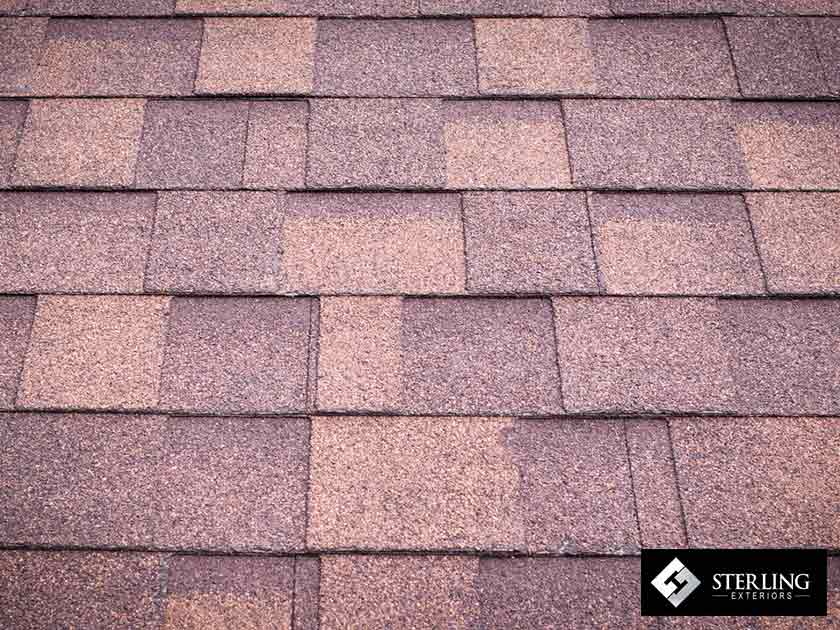Asphalt shingles are popular materials found in many residential roofing systems. They’re easy to install and can be used in different home styles, making them an economical product for many homeowners. A professionally installed shingle roofing system can also effectively protect your home throughout its expected lifespan. But this is only possible with proper care and maintenance by a professional contractor, as they can typically address minor issues before they become more costly to repair.

And while they’re one of the most widely-used roofing materials in the market, asphalt shingles also come with certain issues that you might have already experienced in your roof. One of the most common is granule loss, which can be caused by several factors. For example, granule loss is normal for shingle roofs that have just been installed, but if you find too many granules on the ground near your roof, it might mean a more serious problem.
It helps to understand more about granule loss so that you’ll know whether a repair job or a full replacement can solve your roofing problems. Sterling Exteriors shares their insight:
Asphalt Shingles And Granule Loss
A typical asphalt shingle is made with asphalt granules adhered to a shingle substrate. This creates a layer of granular material that protects against sunlight, UV rays, and other weather elements. Granule loss can happen due to several factors, but not all are problematic to your roofing system. Over time, there will be some granule loss as part of its normal wear and tear, and it’s considered as part of the natural aging process.
Sometimes, there will be granule loss as soon as you have your asphalt shingles installed. This can happen even in well-built roofing systems, but this is hardly anything you need to worry about. The granule loss coming from newly installed roofs is usually excess granules from the shingles during the manufacturing process. They can come loose during packaging, shipping, and installation, and are often removed via water runoff during storms. This is why you’ll sometimes find them in your gutters or at the base of your downspouts mixed with debris or sediment.
However, if you think you’re still having granule loss long after its installation, then this may indicate other problems on your roof. Granule loss can be caused by other factors such as:
- Your Roof’s Age – When your roofing system is at the end of its lifespan, the adhesive that’s holding the remaining granules will start to lose its effectiveness. The granules will then start to wash off and leave “bald” areas that expose the black shingle substrate. These spots are more susceptible to water leaks because they tend to be more porous. If you’re seeing several “bald spots” on your roof, that only means it’s starting to fail. You need a full replacement, so make sure you get it done by a trusted contractor immediately!
- Slope Orientation – Granule loss can also happen in roof slopes that are facing a direction that’s more exposed to the sun or other weather conditions. Depending on where you live, west- and south-facing slopes are more likely to get granule loss, so you may notice granules more on that side of your roof. Your trusted roofing contractor can also determine which side of your roof is more prone to granule loss so they’ll know which areas will need more reinforcement during replacement.
- Roof Blisters – This is another common issue that can happen in an asphalt shingle roof. Blistering typically happens when moisture trapped within the shingle expands and pops/breaks through the surface and creates an exposed spot. It can happen during the summer months when temperatures are at their highest in the year.
Granule loss can come from popped shingles, but if they’re still unpopped, they won’t pose a problem to your roofing system. They can still be effective in keeping your home safe and dry against normal weather conditions. But keep in mind that they can pop anytime and cause granule loss, so you need to determine whether you should get them replaced before they cause further damage to your roof.
It’s recommended that you have your blistered shingles checked and replaced before they pop as they can affect your roofing system’s effectiveness against water leaks and other weather elements. If you only have a few blistered shingles in your roof, then replacing the affected ones should suffice. But if they’re found in most areas of your roof and a lot have already been popped, then consider a full replacement.
- Foot Traffic – You can also get granule loss when your shingle roof gets a good amount of foot traffic. It will usually happen in a natural pathway where the walking and scuffing loosens the granules and comes off the asphalt shingle over time. Sloped shingle roofs aren’t meant to get a lot of foot traffic, so it’s best to refrain from walking on your roof unless it’s needed to prevent further granule loss.
- Manufacturer Problems – Granule loss and premature baldness on shingle roofs can also come from manufacturing defects, but this may not be apparent at first. You can expect a certain amount of granule loss right after installation, but this should stop after the first few months. If it persists, then it may be due to the shingle material not having enough adhesive applied to keep the granules intact. If it’s under warranty, you can have your roofing system inspected by a professional contractor and defective shingles replaced.
Checking Your Roof For Granule Loss
Granule loss won’t always be spotted unless you take a closer look at your roofing system. Check your roof for any signs of pits, cracks, bald spots, or any other kind of damage. You should also check your gutter system closely, especially after a storm. Remember, finding granules in your gutters after rain is normal if it’s newly installed. But if you think that you’re getting more granule loss than normal, you can always have your roof inspected by a trusted contractor!
Here at Sterling Exteriors, we offer quality roof repair and replacement services that always satisfy homeowners. Contact us today at (513) 685-8055 or through our online request form. We serve Cincinnati, Loveland, Newtown, and nearby OH areas.






